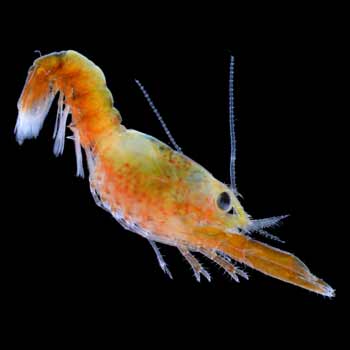Acidic Water Could Be
Impacting Lobsters
by Laurie Schreiber
“(Larval lobster) were
once longer and heavier
than today, and they
also had faster
swimming speeds.”
– Jessica Waller,
research technician,
Bigelow Laboratory for
Ocean Sciences
SAINT ANDREWS, N.B.—It’s still unclear how much increasing acidification of ocean waters might be impacting lobsters, especially in combination with warming water temperatures.
But it’s something to keep an eye on, scientists said during the 2017 Canadian/U.S. Lobstermen’s Town meeting held March 24-25 in Saint Andrews, New Brunswick.
Jessica Waller, a research technician at the Bigelow Laboratory for Ocean Sciences in East Boothbay, said ocean acidification“is often called the other CO2 problem” that will affect different types of marine species.
Acidification has the same root cause as rising temperature, which is an accumulation of CO2 in the atmosphere, with the ocean absorbing excess CO2, thus changing the chemistry of the ocean. The increase in the concentration of carbon dioxide results in a decrease in pH, which means increased acidification that decreases the availability of the carbonate ions that lobsters and other animals need to build their shells.
“Acidification is relatively new branch of study for marine research,” Waller said. “A lot of work has been done on how animals respond to changing temperature.”
So far, she said, research shows that plants of the ocean, both micro and macro algae, might do well in a high CO2 scenario, extracting CO2 from the water and using it to grow.
Of the zooplankton that drift in the water column, cocepods have been studied the most, she said.
“So far, the studies indicate they’ll be mostly unaffected,” by rising acidification, she said. That could also be true for lobster larvae, which drift and likely experience a variety of CO2 environments.

Lobster post larva. Rising temperature was a determining factor in larval survival and development time. Jessica Waller photo, 2015
“So they might have different mechanisms already in place to deal with the changing environment,” she said.
Benthic invertebrates, living on the seafloor, might have trouble maintaining their shells, she said.
“Almost all studies have been done on adults and we have little insight into how ocean acidification might affect the young stages,” she’s added.
Among finfish, only a handful of studies have been performed, she said.
“Summer flounder, so far, is the most studied fish,” she said. “They’ve had some problems with egg development, but juveniles and some adults seem to be relatively unaffected by high CO2.”
Focusing on lobsters and how they might respond to ocean acidification, or ocean acidification in tandem with ocean warming—since they have the same cause and will occur in the same time period—one study found that rising temperature was a determining factor in larval survival and development time, and rising CO2 levels also had implications for larval size and behavior, she said. The study also showed changes in larval behavior: “They were once longer and heavier than today, and they also had faster swimming speeds,” she said.
Coming next in ocean acidification research, she said, are more studies of commercially valuable species and the implications of ocean acidification and rising water temperature for the industry.
“We don’t know how all of these environmental changes will interact with each other,” she said. That includes other changes that are occurring, such as changes in oxygen concentration, pollution and decreasing salinity, she said. “We have no sense of how, when all these things are occurring at once, as they will be, what implications that has. And there’s evidence that sub-populations of lobster and other crustacean species might respond differently to different stressors.”
